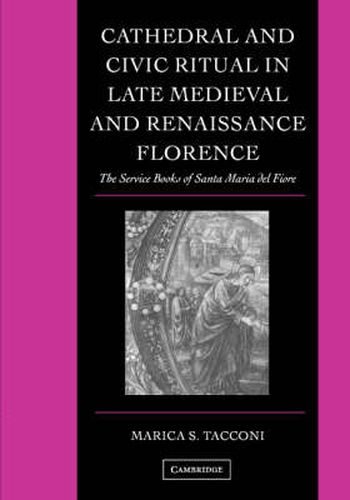Readings Newsletter
Become a Readings Member to make your shopping experience even easier.
Sign in or sign up for free!
You’re not far away from qualifying for FREE standard shipping within Australia
You’ve qualified for FREE standard shipping within Australia
The cart is loading…






The service books of the Florentine Duomo of Santa Maria del Fiore were, like the church itself, a cultural reflection of the city’s position of power and prestige. Largely unexplored by modern scholars, these manuscripts provided the texts and, sometimes, the music necessary for the celebration of the liturgical services. Marica S. Tacconi offers the first comprehensive investigation of the sixty-five extant liturgical manuscripts produced between 1150 and 1526 for both Santa Maria del Fiore and its predecessor, the early cathedral of Santa Reparata. She employs a multidisciplinary approach that recognizes the books as codicological, liturgical, musical, and artistic products. Their cultural contexts, and their civic and propagandistic uses, are uncovered through the analysis of extensive archival material, much of which is presented here for the first time. This important and fascinating study provides new insights into late medieval and Renaissance Florentine ritual and culture.
$9.00 standard shipping within Australia
FREE standard shipping within Australia for orders over $100.00
Express & International shipping calculated at checkout
The service books of the Florentine Duomo of Santa Maria del Fiore were, like the church itself, a cultural reflection of the city’s position of power and prestige. Largely unexplored by modern scholars, these manuscripts provided the texts and, sometimes, the music necessary for the celebration of the liturgical services. Marica S. Tacconi offers the first comprehensive investigation of the sixty-five extant liturgical manuscripts produced between 1150 and 1526 for both Santa Maria del Fiore and its predecessor, the early cathedral of Santa Reparata. She employs a multidisciplinary approach that recognizes the books as codicological, liturgical, musical, and artistic products. Their cultural contexts, and their civic and propagandistic uses, are uncovered through the analysis of extensive archival material, much of which is presented here for the first time. This important and fascinating study provides new insights into late medieval and Renaissance Florentine ritual and culture.